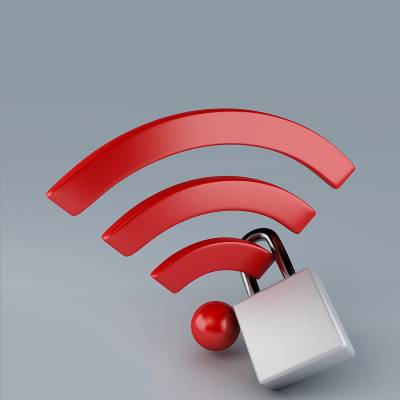 If your wireless router is an archaic piece of machinery from the turn of the century, you owe it to yourself to upgrade to something a little less dusty. Depending on your Internet connection, increasing your bandwidth is a tricky matter, and the easiest way to do so is by upgrading your wireless router. These next-gen routers are simple to use and don't require passwords; something that both increases network security and ease of use.
If your wireless router is an archaic piece of machinery from the turn of the century, you owe it to yourself to upgrade to something a little less dusty. Depending on your Internet connection, increasing your bandwidth is a tricky matter, and the easiest way to do so is by upgrading your wireless router. These next-gen routers are simple to use and don't require passwords; something that both increases network security and ease of use.
WiFi Passwords Are Overrated
By far the most common method of connecting a device to a wireless network is by entering that network's password. Hackers have been able to take advantage of this by developing sophisticated methods and technologies to decipher the handful of characters standing between them and your personal information. Using Graphic Processing Units (GPUs) and brute force attack methods, a hacker can rapidly input up to 8.2 billion password combinations per second. There's a pretty good chance that they'll be able to get it if they try long enough.
Tap-to-Connect
Let's face it; WiFi passwords are less secure than they used to be. The good news is that tech developers are coming up with better ways to secure your network. Tap-to-connect routers are examples of this new technology. These routers have a button that can instantaneously connect a user to their WiFi network. The button triggers a signal that is then sent to your wireless device. All you need to do is authenticate the device and you're all set. The great thing about these routers is that a hacker can't access your network unless he breaks into the building and presses the button himself.
With tap-to-connect, connecting to the Internet is made far more convenient. You'll never have to dig your Internet password out of your files for visitors wanting to use your WiFi ever again. All you need to do is push the button on the router, and ta-da; you're connected to the network.
Near Field Communication (NFC)
If pushing a button is still too much to ask of you, you can use NFC to connect your device to your WiFi network. A router equipped with Near Field Communication technology will detect your device when it is nearby, and voila - your device is automatically connected and logged on to the Internet. ZDNet explains how this works:
Through the new NFC-enabled method, the router's configuration is wirelessly handed to the device and will be connected via WPA2 security, either through a traditional wireless network or an ad-hoc direct network.
More than 10,000 wireless devices have been certified for WiFi protected setup since 2007, and a significant number of them are utilizing NFC technology.
PIN Entry
A unique PIN is assigned to each device that joins a protected WiFi network, and is required in order to access the network. These PINs are used to ensure that the device trying to connect to the network is allowed to do so. This helps to avoid "accidental", or rather, malicious, attempts to access the system.
So, what's the difference between a PIN and a password? The PIN is assigned by a registrar device (in this case, the wireless router), and it will detect when a new device is in range. The device will then prompt a PIN entry. The PIN is encrypted by the system, as well, making it far more secure than a password.
LiFi - WiFi Connection at the Speed of Light
That's right - the broadcasting of the Internet via light energy has been successfully tested and is currently in development! LiFi has the potential to send digital information over a light spectrum at 10 gigabytes per second. To put it in perspective, that's 250 times faster than the average broadband connection, and might be the most secure method of using a wireless network. WiFi, which uses radio waves that pass through solid objects and walls, is significantly less secure than LiFi, which is limited to the room illuminated by the LiFi bulb. So, a hacker would have to break into your house and turn on your lights in order to access your network. Unless you sleep like a log, you'll be sure to catch them in the act.
Your company probably uses several different access points like WiFi, and it also probably uses a variety of network-connected devices. With each access point comes new security obstacles to overcome, and you should never neglect the security of WiFi in favor of your local Internet connection. XFER can help you make sure that your network access points are secure. Give us a call at 734-927-6666 / 800-GET-XFER!
![]()

